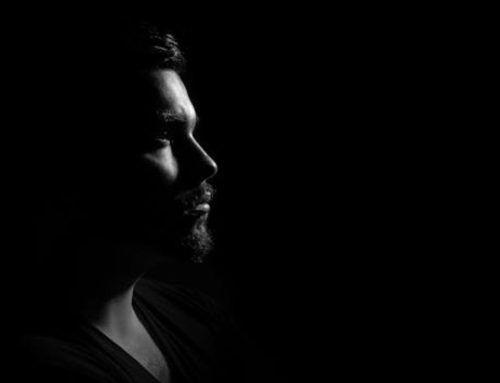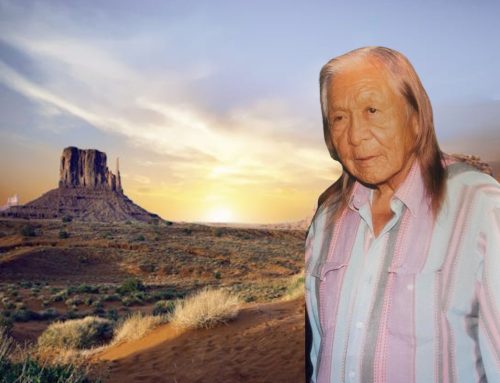There’s a trap many people fall into. And while it may not be talked about in a public or structured way, those caught in it often talk about it incessantly—to anyone who will listen. They ruminate, replay, and seek validation. But what’s missing isn’t talk. It’s understanding.
Because of that lack of understanding, many people suffer terribly. They become trapped in a powerful illusion. Instead of healing, learning, and growing from the experience, they end up doing immense harm to themselves—emotionally, mentally, and sometimes even physically.
They develop an overwhelmingly powerful romantic obsession for someone—a man, a woman, or someone who doesn’t fit neatly into either category. Someone they dated briefly or someone they never dated at all. Someone who once showed them interest. Someone who drifted in and out. Someone who was never really available.
And yet, they can’t stop thinking about them.
This fixation becomes all-consuming. Life begins to revolve around this person. The days are filled with obsessive thoughts, fantasies, hopes, and imagined scenarios. And when that person doesn’t reciprocate, when they pull away or disappear completely, the emotional grip only tightens.
This is the torment of romantic fixation.
In many cases, the fixation becomes even stronger in the absence of reciprocation. The longing intensifies. The fantasy grows. And the emotional pain deepens. Sadness. Heartache. Depression. A sense of emotional paralysis that lingers for months, years—sometimes decades.
People stuck in this pattern often miss out on real opportunities for connection. They fail to see or appreciate those around them who are available, kind, and emotionally safe. The fixation blinds them. And sadly, even when the object of their obsession tolerates their presence, they often find the person’s fixation uncomfortable, and at times threatening. The one who obsesses becomes unattractive in their desperation.
I know this experience intimately. I’ve wasted years of my life caught in these patterns. At times, I feel regret for the opportunities I missed, the time I spent clinging to women who were never going to love me. But this fixation wasn’t just a bad habit or a lack of insight. It was part of the reenactment of my deepest emotional wounds. It was my karma—a painful lesson I had to learn. And I probably wouldn’t have suffered quite so much—might have healed and freed myself from this pattern—had someone possessing the much-needed understanding been there to guide me. But it was up to me to find my own way out.
Only years later did I come across the articles and videos of therapists, teachers, and healers—and have conversations with individuals who had enacted similar patterns in their own relationships, who had also gone through experiences much like mine. These were people who understood what I had been through. I learned a lot from them. Their insights gave me the cognitive understanding I had been missing.
But the intellectual understanding only took me so far. I took off from there—deepened my understanding through years of intensive practice and therapeutic intervention. The practices I developed and the interventions I worked with helped to facilitate the healing and transformation of the deeply wounded parts of me. And now, I want to share these insights and understandings with those who are still stuck in that loop.
What Romantic Fixation Feels Like
Romantic fixation isn’t just having a crush or missing someone. It’s far more intense.
- Constant thoughts about that one person
- Fantasizing about being together
- Replaying past interactions over and over
- Reading deeply into every message, every silence
- Assigning deep significance to them and the connection
- Feeling sadness, heartbreak, hopelessness, and longing
You may feel like they’re the only person you could ever love. You may even believe you were meant to be together. But the truth is, you’re caught up in an illusion—a narrative constructed by your mind through the filters of emotional wounding, projection, and the powerful neurochemical processes of your brain, combined with the deep instinctual drive to bond with another human being. It’s not just about them. It’s about what your psyche and nervous system are trying to resolve—processes that unfold largely outside of your conscious awareness.
The Attachment Wound at the Core
At the heart of romantic fixation lies an attachment wound.
For those of us with anxious-preoccupied or disorganized attachment styles, relationships can activate survival responses. We seek connection with those who are inconsistent or unavailable—not because we consciously want that, but because it mirrors the emotional patterns we knew growing up.
Many of us were raised in environments where emotional safety was inconsistent. Love was conditional. Connection was unpredictable. We learned to watch closely, to scan for signs, to fight—for attention, for love, and in some instances, for our very survival.
Romantic fixation is often a form of trauma reenactment. Our psyche is trying to resolve old wounds through a new relational stand-in: “If I can get this person to love me, then I’ll finally be okay.”
But it doesn’t work.
The Fantasy Trap
One of the most dangerous aspects of romantic fixation is the narrative we create.
The mind assigns mythic significance to the other person. They become a savior, a soulmate, an answer to every longing. Every small gesture is imbued with meaning. Every silence becomes a cliffhanger.
The less they give us, the more we obsess. Our fantasy fills in the gaps—constructing, for some, a perfect relationship that never actually existed. And for others, it’s not the fantasy that dominates, but the painful awareness of the absence of the person we so desperately long for.
This isn’t love. It’s survival energy disguised as romance. It’s your psyche and nervous system clinging to what it perceives as a source of safety, love, and meaningful connection.
The Toll It Takes
This kind of fixation is devastating:
- Emotionally: sadness, depression, anxiety, hopelessness
- Physically: disrupted sleep, somatic pain, exhaustion
- Relationally: inability to connect with others, isolation
- Spiritually: feeling lost, stuck, fragmented
You may feel shame for not being able to let go. You recognize the damage it’s doing, yet feel powerless to stop. The obsession strips you of any sense of well-being and dignity. It consumes enormous amounts of time you can never get back and precludes the possibility of real connection.
Why We Stay Stuck
- We believe closure or reciprocation will bring relief
- We crave the dopamine hit when they engage
- We fear being alone or unlovable
- We haven’t learned how to self-soothe or digest our own lived experiences and distressing emotions
Without guidance or tools, we end up cycling through the same crazy-making thoughts and emotions, retraumatizing ourselves in the process.
What Finally Begins to Break the Spell
The first step for many of us is understanding this simple truth: Yes, it is a form of madness—but it’s not your fault. In many cases, it’s a deeply ingrained response to unmet needs and old emotional wounds.
Psychotherapy, for many of us, is an essential part of the healing journey. Yet we also need to be reading articles and books, and listening to videos by those who can offer a more comprehensive understanding of the patterns we’re enacting in the ways we form attachments.
And before going any further, I want to call out a trap I see many people falling into: they’ve read the books, watched innumerable videos, maybe even spent years in therapy—and yet they’re still so much in their heads. They may have gained some degree of intellectual understanding, but they’re still deeply wounded.
One component of this trap is the belief that if they can just figure it out—why the person they’ve fixated on pulled away, or why their relationship (or relationships) aren’t working—then somehow it will all come together. That they’ll finally get the love they so desperately crave. That their heart will finally heal. That everything will somehow work out in the end.
So many of us have to learn the hard way—and there are others who never do—that it doesn’t work like that.
One of the biggest mistakes so many of us make is fighting — resisting the reality of our love life, or more accurately, the lack thereof. We resist by trying so desperately hard to pursue, to reach out, to force the connection or make the relationship work. We’re also resisting when we distract ourselves, numb out, or do anything to avoid feeling our authentic emotional responses. Yes, it can be painful as hell — the emotions it evokes can feel unbearable. But to the best of our ability, we need to embrace our experience for what it is, and allow ourselves to acknowledge and fully feel what’s actually there.
Whenever I encounter someone still trapped in this pattern, I can feel the pain lodged in their body. On one hand, there’s a profound emotional disconnect—yet at the same time, they’re driven, and to some extent, possessed, by the pain they’re holding. They’re so far up in their heads, spinning obsessively in their thoughts about the person they’ve grown so attached to, that they’re largely cut off from their own inner source of nurturance. And because of that disconnect, they end up sucking the life force from those with whom they interact.
Breaking free requires enormous discipline, courage, and the willingness to feel—and to make consistent use of the most effective practices and therapeutic interventions.
Whenever we’re caught up in these romantic fixations, many of us are so consumed by the narrative we’ve constructed that we lose ourselves in the fantasy. We need to make a concerted effort to continually bring ourselves back to the reality of the here and now. For many of us, that means acknowledging: this person is not with us. They’re not returning our calls. Maybe they’re saying and doing things that are really hurtful—or they’re involved with someone else. Whenever we find ourselves spinning in the narratives created by our minds, we need to bring ourselves back to our present-moment reality.
Once we acknowledge what’s true in the here and now, we need— to the best of our ability—to access and feel as fully as possible any bodily sensations that arise, along with our authentic emotional responses. Then breathe—softly and deeply—into those feelings and sensations as they arise.
For some, letting go comes relatively easily. But for those of us who’ve repeatedly found ourselves caught in romantic fixations, the emotional wounding often runs extraordinarily deep. I had to keep bringing myself back to reality—again and again—while accessing the feelings and bodily sensations that arose in response to what was actually happening in the present moment, and then breathing into them.
Any therapeutic modality that helps you reconnect with your body and process your emotional responses can support your healing. But consistency is crucial—because these patterns don’t dissolve overnight. The wounds live deep in the psyche and body, and they often require time, presence, and ongoing commitment to fully transform.
As I’ve spoken of many times, the deep tissue bodywork sessions were incredibly helpful because they brought so many of the trapped emotions buried in my body to the surface—so I could finally access and process them.
During the vision quest, a traditional Native American practice that involves fasting alone in the mountains for four days and nights without food or water, I could at times feel an extraordinarily powerful presence descending into my body. As that happened, I could feel this presence transforming the imprints of past relational trauma and the highly charged emotions attached to them. This same healing presence facilitated the development of entirely new and much healthier models of attachment.
What was—and still is—so nice is that I no longer felt, or was taken over by, those overwhelmingly intense emotions. The feelings of needing so desperately to be with someone. The sense of helplessness. The emotional torment. Yes, I could still feel desire—and even powerfully—for someone. I could also care deeply. But I had developed a healthy level of detachment. It was no longer such a big deal. I could let go and walk away if the feelings weren’t reciprocal. And many times, even if there was an initial attraction, I could sense when there was a lack of resonance—or when the other person simply lacked the capacity to form an intimate bond, emotionally and otherwise.
Having trained with a traditional Native American doctor (medicine man) from the Kiowa Tribe—and having gone through so many vision quests, along with the intensive work of healing my own attachment wounds—I’ve developed the capacity to facilitate this same kind of deep healing in others. The presence that moves through me during individual sessions initiates and catalyzes the healing and transformation of trauma—the deeply wounded parts of yourself. As you go through this process, you begin to digest both your lived experiences and the highly charged emotions attached to them.
What I see happen in the people I work with is that they begin to digest their own relational trauma and the highly charged emotions bound to those experiences. The obsessive attachments that once consumed them start to dissolve. They’re no longer clinging so tightly. There’s a growing ease about them. They become more embodied—no longer stuck in looping thoughts, incessant fantasies, or the debilitating emotional patterns that once held them captive. Something deep shifts, and they can feel it in the way they move through the world.
As their love and acceptance for themselves grow, they become more compassionate and better able to self-nurture. They’re no longer chasing people to fill the void. That inner shift makes them naturally attractive in a grounded, embodied way that draws in the kinds of individuals they truly resonate with.
This is the kind of transformation that becomes possible when we do the real work — when we show up consistently and commit to the process. If you’re feeling called to take that next step, you can click the link or reach out to me directly at (332) 333-5155.
©Copyright 2025 Ben Oofana. All Rights Reserved.







Leave A Comment